Past Recipients
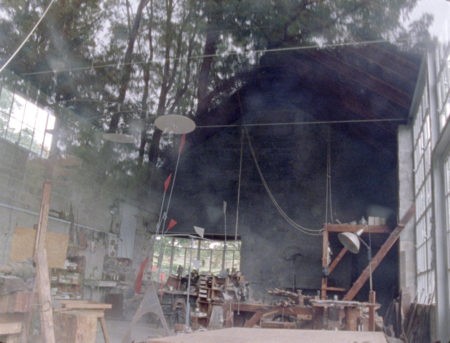
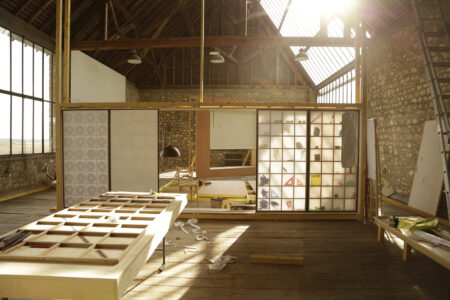
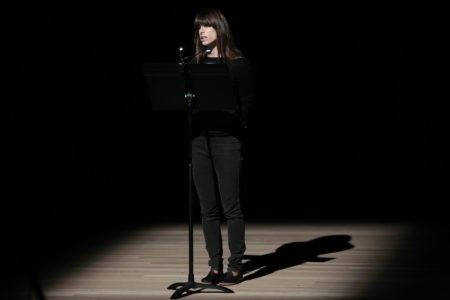
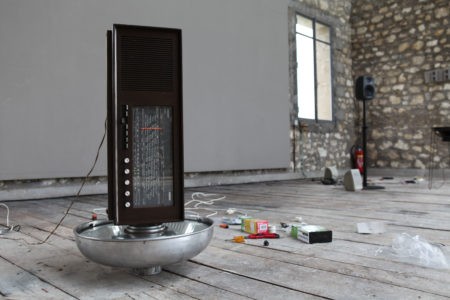
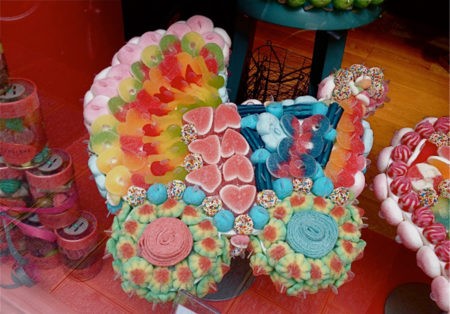
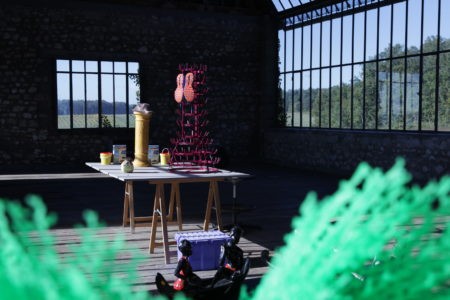
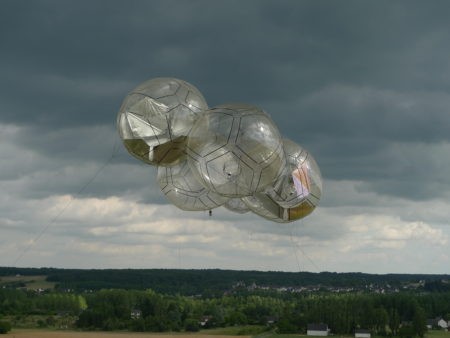
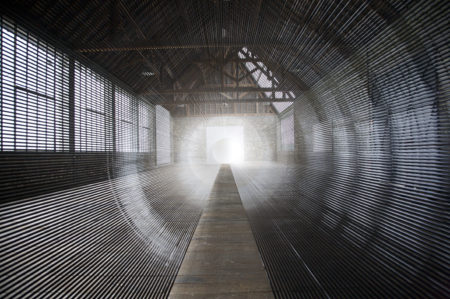
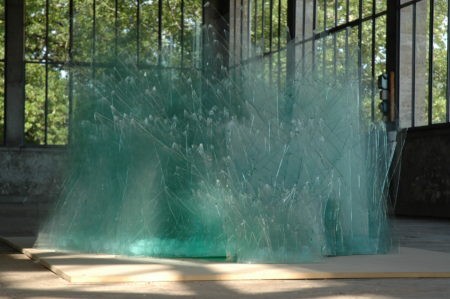
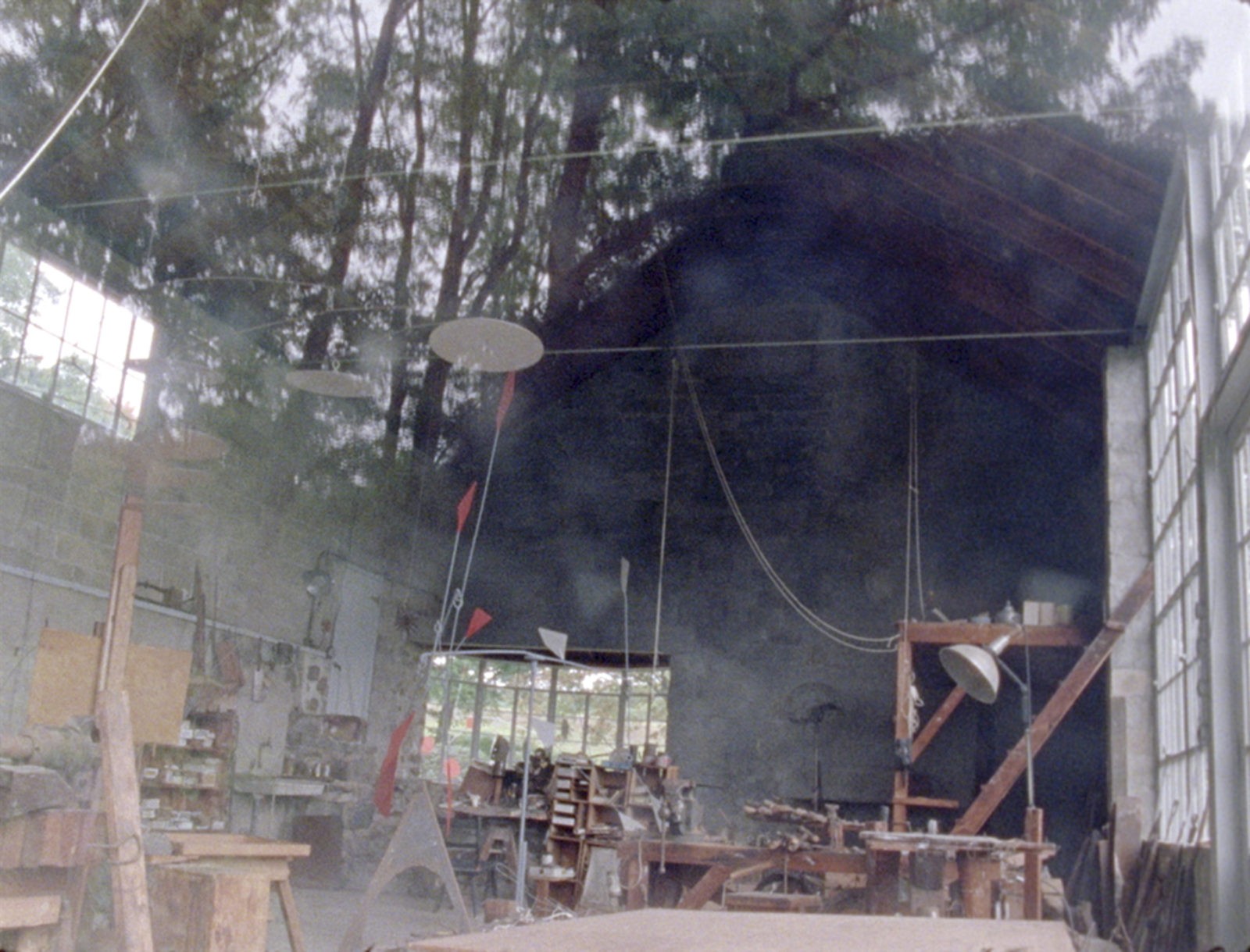
Born 1972, Agrigento, Italy; lives and works in Berlin
“There is a supernatural, almost spiritual quality to Rosa Barba’s work that connects us to unknown realms. Her artworks are comprised of seemingly simple imagery, but if you spend time investigating them—feeling them—their dynamic qualities reveal themselves. Rosa’s innovations reward us with insight into a universal nature and maybe more importantly, the possibility of personal revelations. Exactly the same can be said of my grandfather’s work.”
– Alexander S. C. Rower
In 2017, the Calder Foundation commissioned Barba to create a cinematic “portrait” of one of Calder’s works in her own visual language as part of an ongoing series of contemporary artist films curated by Vic Brooks. After visiting Calder’s studio in Roxbury, Connecticut, Barba chose to focus on an unpainted mobile from 1968 above one of Calder’s workstations, reflecting light below and creating ambient sound. The resulting short film, Enigmatic Whisper, shot on 16mm and accompanied by an original score, exquisitely captures a sensation of vitality as well as a haunting quality of the space—as if Calder had just left.
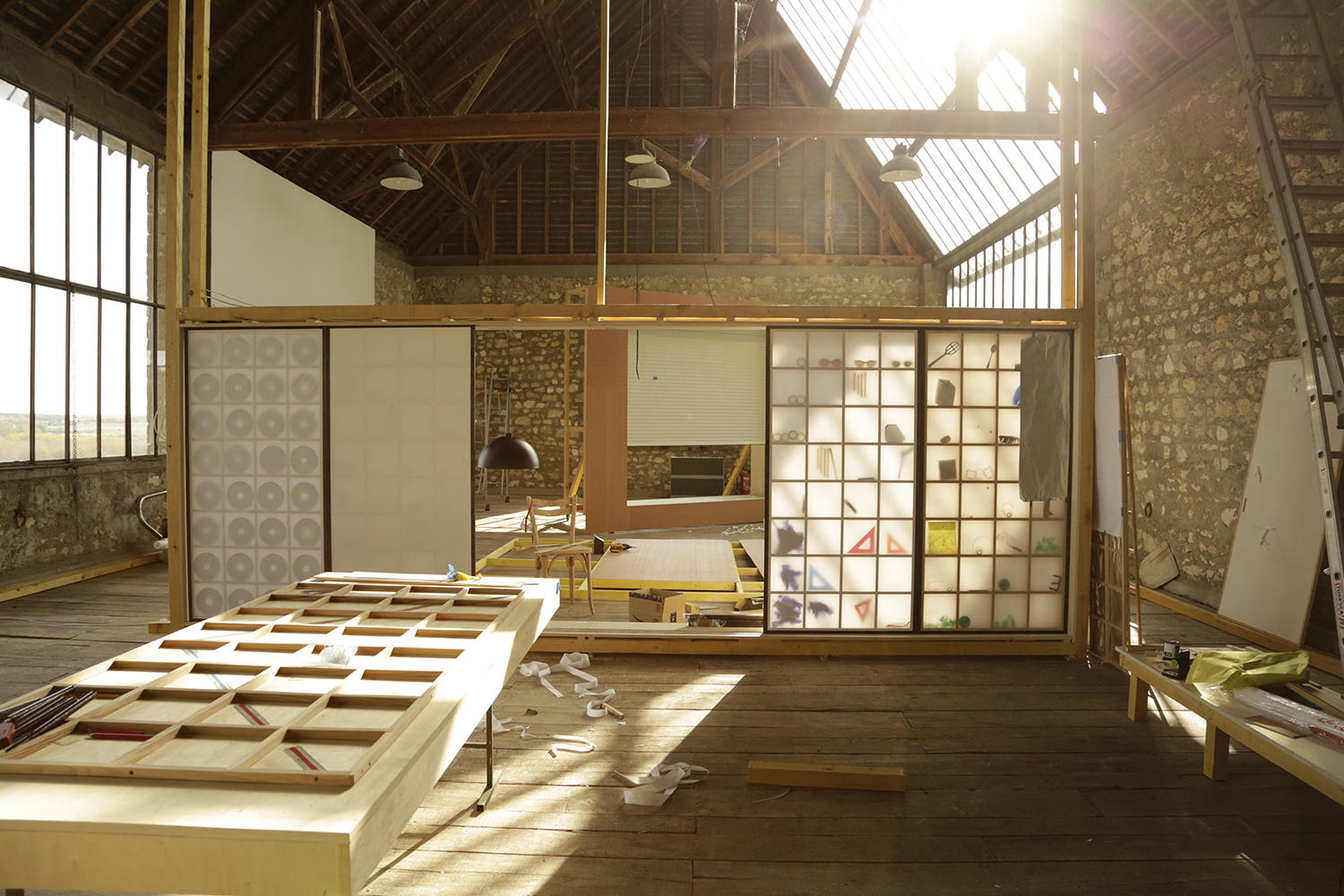
Born 1980, Kanagawa, Japan; lives and works in New York City
“Aki Sasamoto uses everyday objects, movement, set design, and food in her performances to evoke the absurdity of the human experience. She improvises environmental elements such as equations or sounds in ways that are impossible to anticipate. This intangibility keeps us on our toes and somehow coalesces into magical coherence. The resulting energetics resonate with my grandfather’s own experiential art.”
– Alexander S. C. Rower
In 2012, the Calder Foundation invited Sasamoto to participate in Oh, you mean cellophane and all that crap, a 12-hour program held at the McKittrick Hotel in New York City that featured contemporary artists and performers whose works embody immateriality and its transformation of space. Nearly a decade later, in the spring of 2021, Sasamoto was an artist-in-residence at Atelier Calder, which is operated out of Calder’s studio and home at Saché in the Indre-et-Loire Valley. During her four months in France, Sasamoto created Squirrel Ways, a performance and installation about the blurred lines of interior and exterior domestic spaces. Every activation of the work is different, with Sasamoto talking about the objects she has placed in and around a series of mobile walls as she physically goes through and underneath them. The piece is humorous and unexpected, and its improvisational nature builds a palpable sense of anticipation. While creating the work at Atelier Calder, Sasamoto drew from the relationship between Calder’s objects and the domestic environment. “When volumes exert their ownness, and behave like living characters in our psyche, those sculptures truly occupy the same space as us. I like how sculptures can blur the line between art and life like that.”
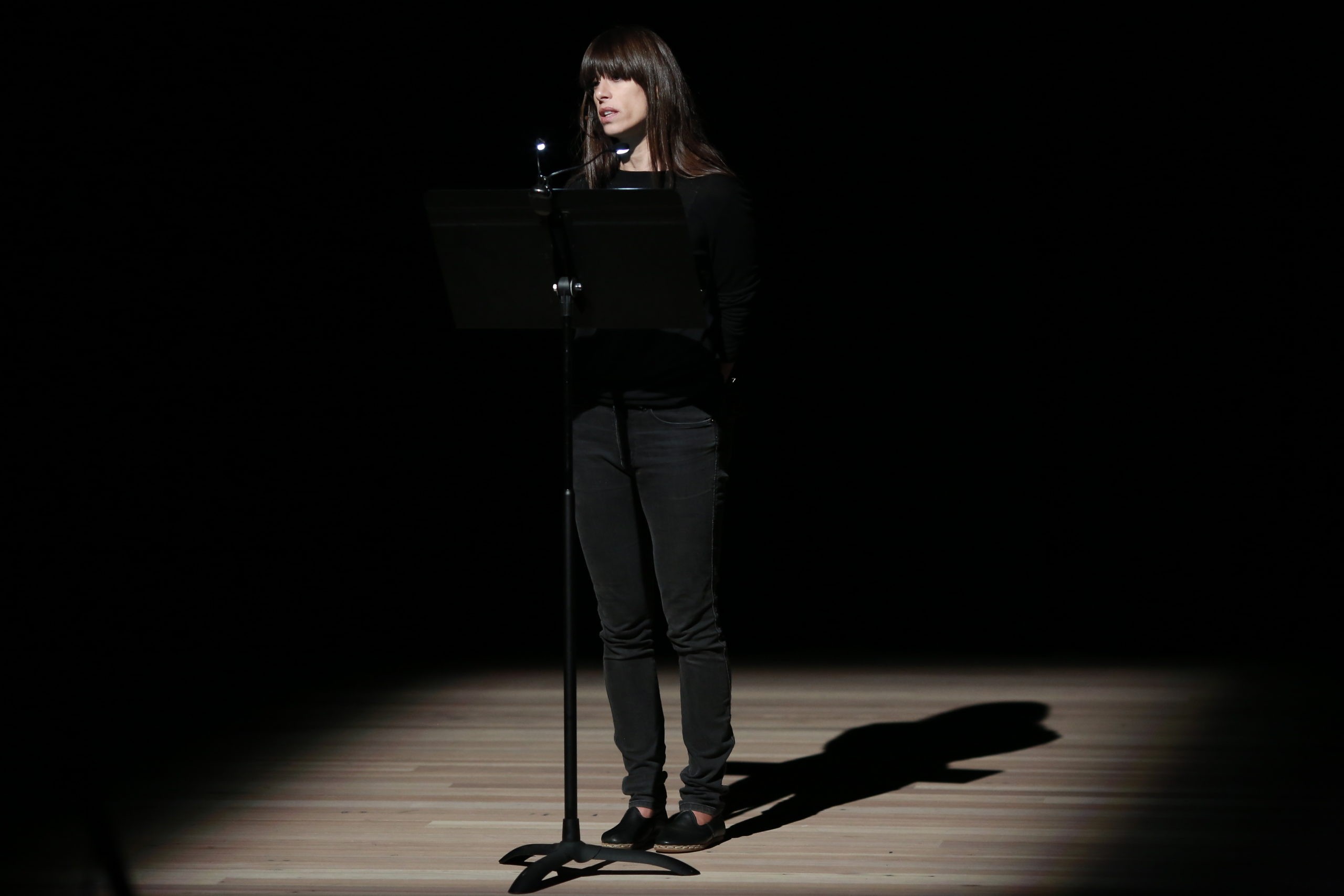
Born 1973, Bridgeport, CT; lives and works in Brooklyn
Although Calder and Magid appear to be polar opposites, the two artists share a common ground, drawing as they do upon immaterial notions as material—whether that be permission, as in Magid’s case, or chance, as in Calder’s––to reveal the complexities beyond transparency. Central to Calder’s vision was the principle of disparity: “My whole theory about art is the disparity that exists between form, masses and movement. Even my triangles are spheres, but they are spheres of a different shape.” In his mobiles and stabiles, Calder unites symmetry and asymmetry, or parity and disparity, in ways that assimilate the larger, unseen forces at work in the natural world. Likewise, Magid pulls on loose ends both tangible and intangible––probing seemingly impenetrable systems––and finds unification in disparate elements. Her tenacity echoes Calder’s own in his radical transformation of sculpture.
In the summer of 2017, Magid was commissioned by the Whitney Museum of American Art to create a collateral project for the exhibition Calder: Hypermobility. Entitled Awaiting Alexander Calder, Magid’s performance centered around the circumstance of five standing mobiles by Calder whose tops and bases were mismatched by the artist’s galleries between 1960 and 1965.
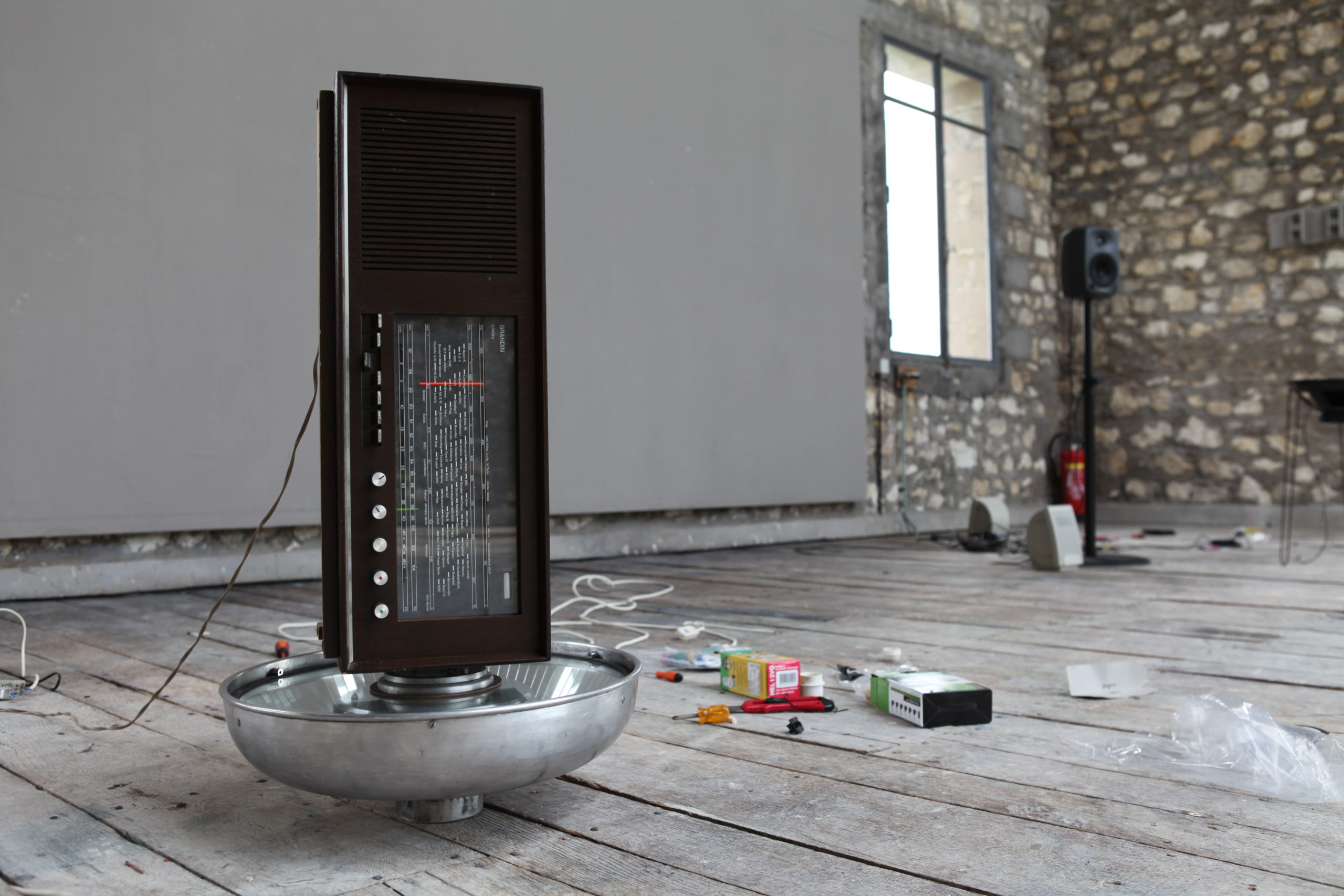
Born 1977, London
“Avant-garde music, composed and presented by unconventional and unpredictable means, was a central component of Calder’s practice. Haroon Mirza likewise complicates the distinctions between noise, sound, and music in his real-time, site-specific installations, performances, and sculptures. Using recycled technological apparatuses from bygone days, he transforms their function and meaning. Mirza is the first laureate to be recognized for his use of the medium of sound as an integral part and subject of his work, as seen in The Calling (2013), an acoustic installation made during his residency. He decisively captures us in unseen volumes, creating pockets of exceptional intervals that reposition and intervene our energetic boundaries.”
– Alexander S. C. Rower
“Live/working on top of a hill in rural France felt like time had ceased to exist. I arrived at the house blindfolded and attempted to learn the space acoustically for the first 24 hours. I had hallucinations of some of the architecture that turned out to be not too dissimilar from reality. For a week after I only visited the studio blindfolded—I heard the scale of the space. We all had a project in Saché; Gaia made colours, Xiaano learned to sit up and crawl, and I wrote what turned out to be (with the help of Shiva Feshareki two years later) my first mini opera.”
—Haroon Mirza on his Atelier Calder residency
Quotes drawn from the catalogue for Pace London’s 2016 exhibition The Calder Prize: 2005–2015.
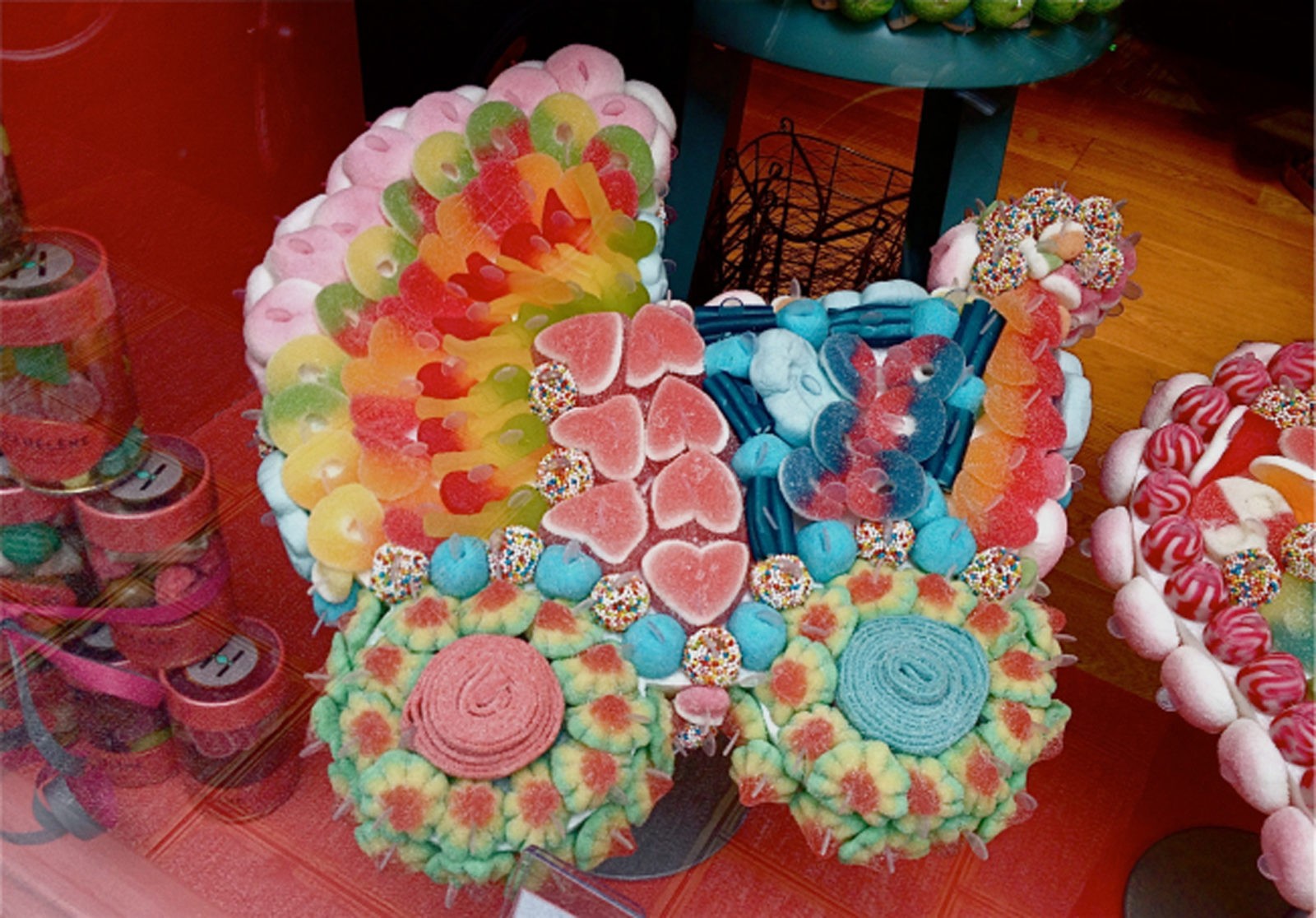
Born 1978, Bridgeport, CT; lives and works in New York City
“Darren Bader’s unconventional appropriation of found objects not only questions the boundaries of sculpture but also creates unexpected and often absurd-seeming phenomenological experiences with tremendous variance. A critic’s view of Calder’s work from 1931 could very well have been written about Bader: ‘…made from ordinary bits of wire, rough bits of cigar box and cardboard, ordinary string, clothes pins, pipe cleaners, cork, bottle tops. What other junk is there lying around the house?’ While in Saché, Bader interweaved encounters both celebrated and provincial with existential challenges, culminating in works such as Trois Gnossiennes, consisting of three pianists who mash-up Erik Satie’s Gnossiennes nos. 1, 2, and 3, and the appropriation of a concrete sink from the home of our Saché studio manager’s grandmother!”
– Alexander S. C. Rower
“Most days in Saché I would take a walk. There were fields. It was a means of company. I disliked when the occasional car would drive by. Once there was a hunter with his dog in a fallow field.
In the studio at Saché I couldn’t really get anything done. It was beautiful (the studio, I mean).
There was a terrace outside the studio. I would often lie on my back and read there.
There was good WiFi in the house. I tried to brush up on my terrible French with online software. I wrote a lot in the house. Most of the written content was solipsistic- cum-narcissistic.
Here’s something more accessible:
The mosquitos aren’t vicious here. They fly around with no apparent tactic.
I almost never have bites.
The flies here indeed “drop like flies,” then decompose into wooly balls I’d never been around to notice before.
The dragonflies here are large, their color extraordinary. They seem to have no intellectual capacities (which is disappointing).
The butterflies are butterflies (although they might be moths).
While Skyping with my therapist, I see a large moth flapping about loudly. Is it a dragonfly? No it’s a bat.I took some trips to visit the châteaux. I bought/ate a lot of cheese and produce. I went to Paris every couple weeks. Silence has its beauty.”
– Darren Bader on his Atelier Calder residency
Quotes drawn from the catalogue for Pace London’s 2016 exhibition The Calder Prize: 2005–2015.
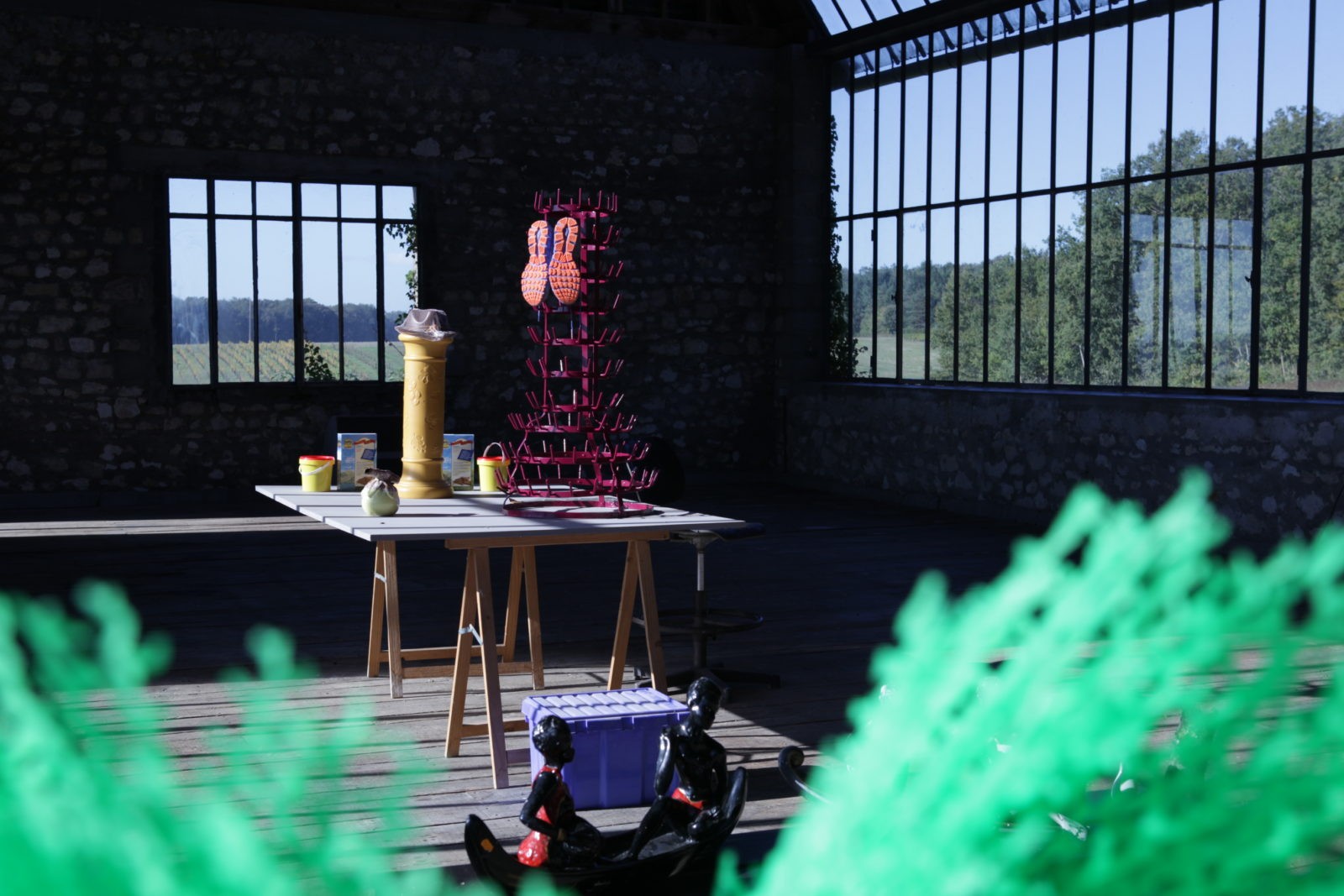
Born 1966, New York City; lives and works in Brooklyn
“Like sound, size, texture, and shape, Calder used color as a means to achieve disparity in his compositions. For Rachel Harrison, color is alternately narrative, symbolic, and expressive, and her sculptures occupy a space both real and imagined. She once remarked that she wants to make ‘shapes that can’t be described,’ a statement that could have as easily been applied to Calder’s mobiles in the 1930s as to the sculptures that Harrison made in Saché in 2011. In these works, Harrison incorporated found objects that reflect yet transform the local vernacular, including milk jugs from a nearby dairy farm and a bottle rack of Duchampian descent.”
– Alexander S. C. Rower
Quotes drawn from the catalogue for Pace London’s 2016 exhibition The Calder Prize: 2005–2015.
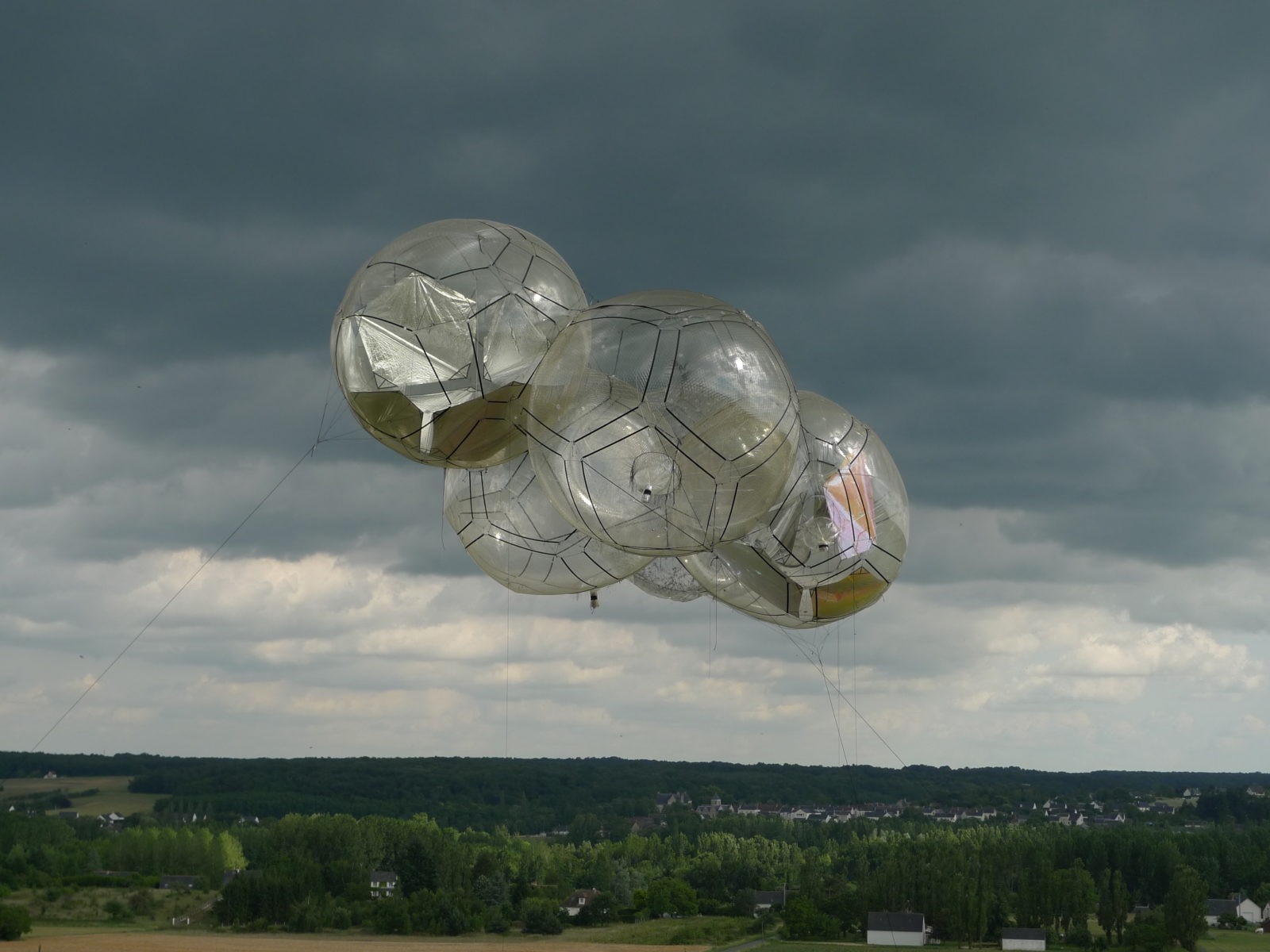
Born 1973, Argentina; lives and works in Frankfurt
“The fantastic, participatory installations of Tomás Saraceno create spatial and perceptual relationships that merge the disciplines of art, science, engineering, and architecture. Many of his works rely on solar and wind energy, resulting in floating sculptures that resonate with Calder’s professed interest to create ‘an atmospheric condition, or even a void.’ And in the spirit of my grandfather’s own experimental ethos, Saraceno envisions significant innovations that include utopian views for humankind’s future. During his residency, Saraceno fabricated and launched an extraordinarily beautiful helium-fuelled crystalline pod, part of his now-famous Cloud Cities.”
– Alexander S. C. Rower
“It was exciting to work in the same studio where Alexander Calder created his masterpieces. Since I developed many sculptures and try-outs during my residency period, I also had the chance to involve the local community in the project, from craftsmen working in town to students who came by for a workshop. It became clear then that my favorite method for working is by Doing-It-Together. This had a great impact on my work, and, naturally, on my career. Back then I was working on Cloud Cities, ongoing cityscapes up in the clouds. Today I am working on ideas that first arose there: Aerocene, lighter-than-air flying sculptures that float endlessly in an emission-free journey around the world, in a choreography between heat, the motion of the earth, and the sun. Aerocene floats around the world without burning fossil fuels; without using solar panels and batteries; and without helium, hydrogen and other rare gases.”
– Tomás Saraceno on his Atelier Calder residency
Quotes drawn from the catalogue for Pace London’s 2016 exhibition The Calder Prize: 2005–2015.
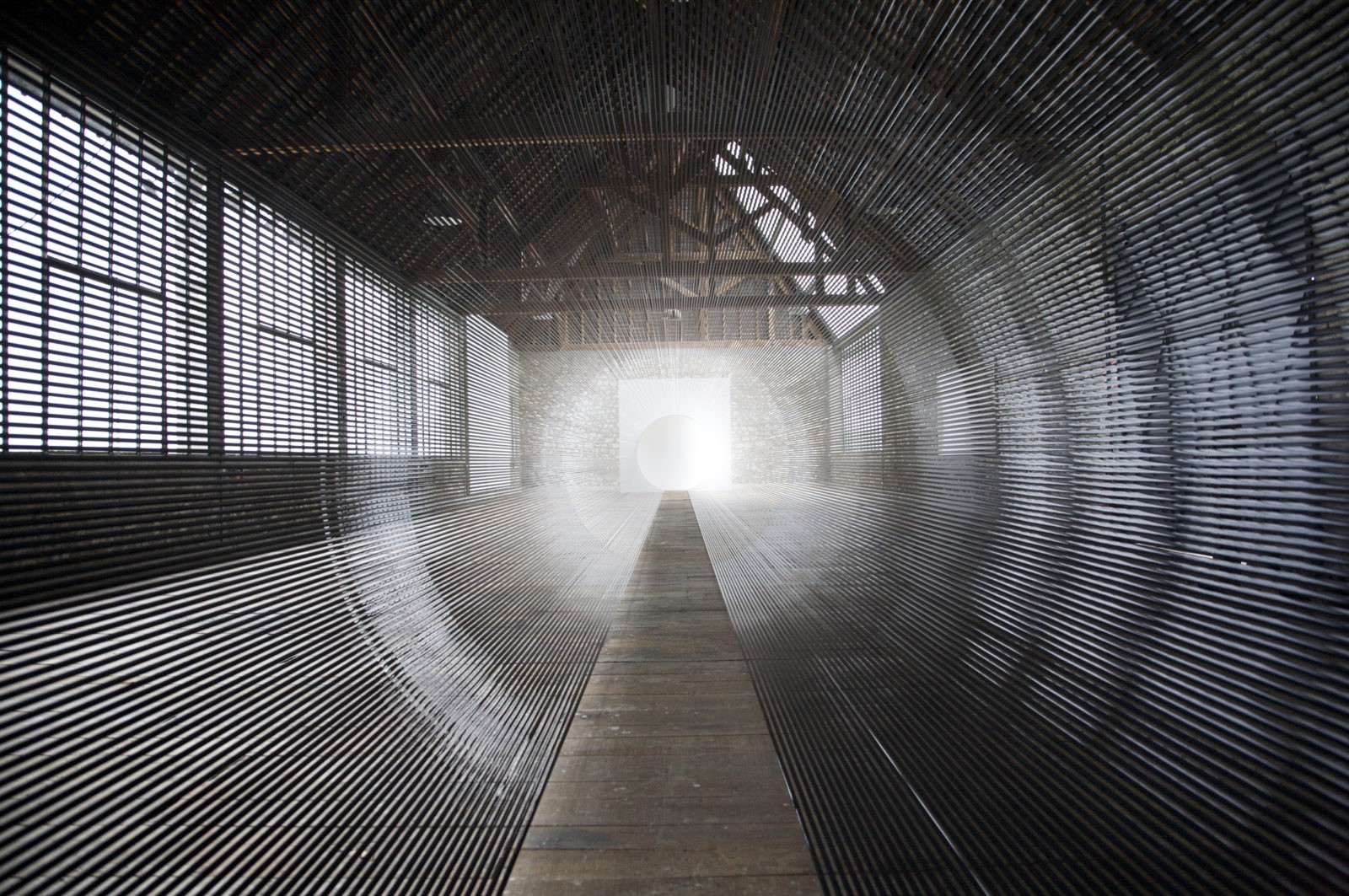
Born 1969, Lithuania; lives and works in New York City
“Utilizing industrial fans in his installations to undulate loops of videotape, Žilvinas Kempinas creates gracious gestures in space that are at once minimalistic and yet keenly present. What is most fascinating about Kempinas is not the materials he employs but the transformative experience that his work evokes through its immateriality. In response to the expanse of Calder’s studio and the surrounding hills, Kempinas began working on a much larger scale in Saché. The dimensions of his now famous Tube (2008), a shimmering walkway of magnetic tape that ultimately filled the Lithuanian Pavilion in the 2009 Venice Biennale, was maximally scaled to fit the volume of the Saché studio. Kempinas is the only resident whose work has registered those ideal proportions that Calder designed for himself in 1962.”
– Alexander S. C. Rower
“Atelier Calder is a boot camp for artists. You are left in the wilderness of rural France for five months to defend the castle—Calder’s studio and its legacy. You must do it by making some expectably excellent work and your only allies are Corinne and Guillaume, two dedicated English-speaking saviors.
Then off you go, battling every day the most brutal and fierce enemy of all—yourself. This task is not interrupted by disturbances of urban life; just by occasional weekend rides in a little stick shift Citroën called Picasso to a local street market, filled with varieties of dangerously delicious cheeses, oysters, and fresh vegetables. A local winery with excellent wine is conveniently situated nearby, as are the many Loire Valley châteaux for any given weekend, each one more beautiful than the other, just like in a fairy tale.
I remember incredible morning light, freshness of countryside air mixed with smoky hints of burning firewood, wide-open sunsets, spooky quiet nights.
Surprisingly, I did not feel intimidated by the scale of the studio or the fact that it was once Calder’s workspace, which he built himself; instead it felt friendly and truly inspiring. Perhaps because the building was dedicated exceptionally for making art, therefore it is different in essence from any other building I ever encountered. You can feel this right away once you step inside.
At the end, the ‘boot camp’ turned out to be a life-changing, unforgettable experience.”
– Žilvinas Kempinas on his Atelier Calder residency
Quotes drawn from the catalogue for Pace London’s 2016 exhibition The Calder Prize: 2005–2015.
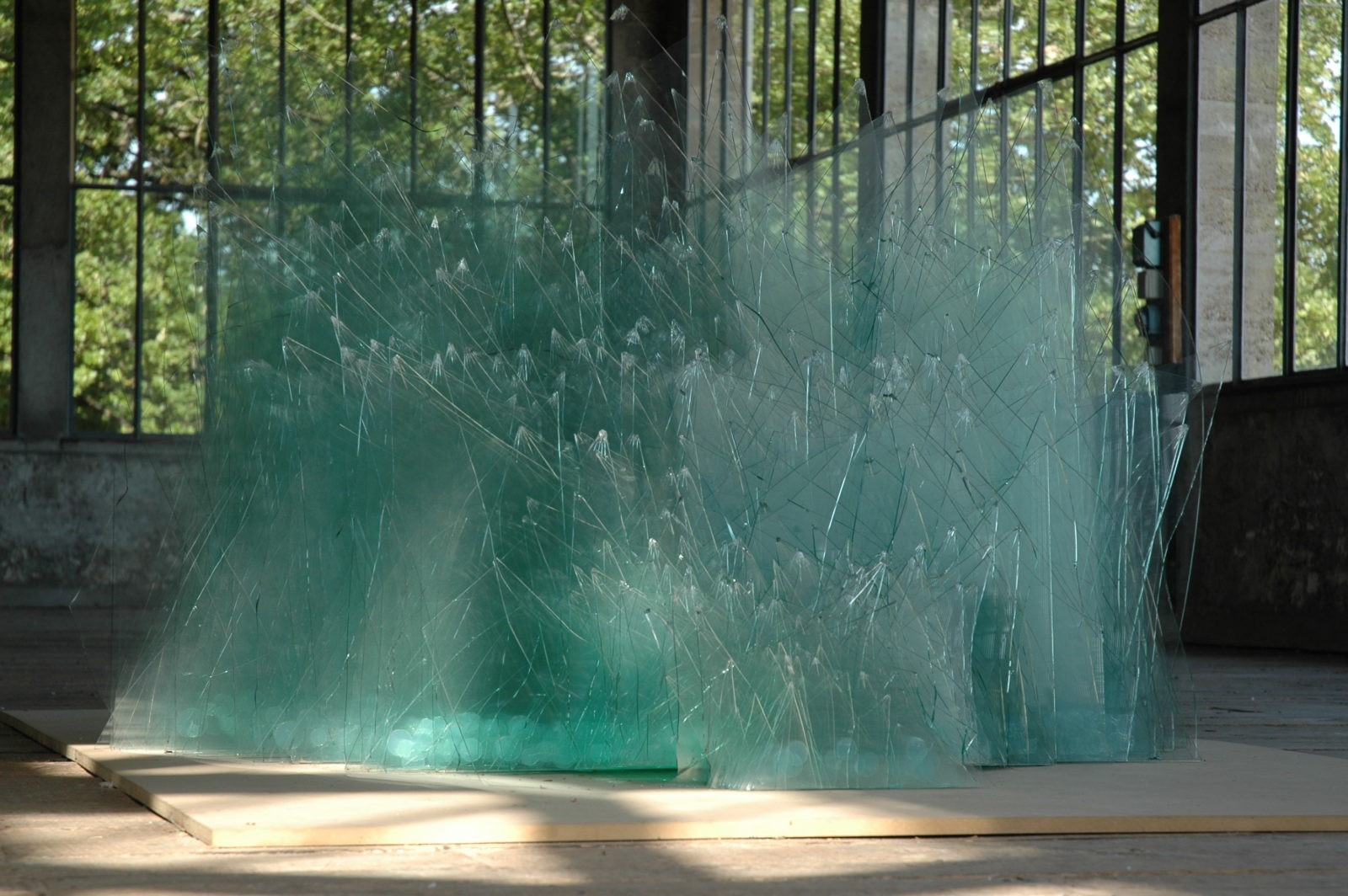
Born 1969, New York City
“Tara Donovan transforms space with vast amalgamations of readily available materials. Her works not only present optical challenges but also diffuse the identity of her source material, as scale and accumulation deceive our attempts to calculate and decode process. Underscored by a pragmatic rigor, Donovan’s approach astounds us with the sublime effects she achieves by using toothpicks, asphalt roofing shingles, or Styrofoam cups.”
– Alexander S. C. Rower
“The Atelier Calder residency in Saché came at a busy time for me as an emerging artist. It allowed me to isolate myself and prioritize my studio practice outside of the pressure to constantly produce work on tight deadlines. In the beginning of the residency, I was consumed with planning and producing my installation of plastic cups at Pace Gallery in New York (my first major show with the gallery). Having the time and space to strategize a monumental installation in the rural setting of the studio gave me a chance to work outside the distractions of New York. I was also able to travel throughout Europe during my time at the residency, which I hadn’t had a chance to do extensively before.
Outside of the network of people and resources I developed in New York, I was challenged to find new ways to find materials and develop methodologies for producing work. Because my studio in New York functions as a collective with my team of assistants, at Saché I was forced to think about my practice on a smaller scale as an individual, which resulted in a series of intricately organized rubber band drawings. I also began working with plate glass as a sculptural material. By breaking large pieces and stacking them vertically, I attempted to compress the shattered edges into a linear façade when viewed from a perpendicular orientation. While I ultimately abandoned the sculptural project with plate glass, my experimentations at Saché led me to further explore the mark-making possibilities of shattered glass in a series of drawings.”
– Tara Donovan on her Atelier Calder residency
Quotes drawn from the catalogue for Pace London’s 2016 exhibition The Calder Prize: 2005–2015.